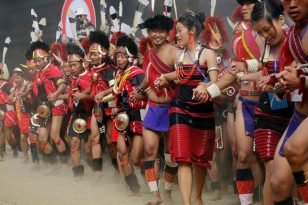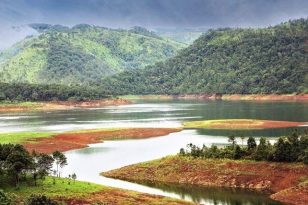| Tour Price | Land Only: £3100 per person on twin sharing basis Prices are all inclusive with no hidden or local payments. |
|
| Flights | We can arrange to book flights for you through our partner travel agent or you can arrange your own flights and we will arrange for your transfer from the place where the tour starts | |
| Best time of visit | September-June | |
| No of days | 13 days | |
| Tour Dossier | Download Dossier | Booking Enquiry |
Destinations
Paro → Thimphu → Punakha → Bumthang → Gangtey → Paro
Detailed Itinerary
Arrive at Paro International Airport from Delhi, Calcutta, Kathmandu or Bangkok. Paro is situated in a beautiful valley at 2280 metres and is a fitting introduction to this charming kingdom. Your guide will meet you and take you on a short one-hour drive along the Paro and Thimphu river valleys to Thimphu, Bhutan’s capital, at 2320 metres. You can stop on the way to take in the magnificent Tamchhog Lhakhang, the hereditary place of worship for Bhutan’s iron bridge builder. When you are ready to start your sightseeing you can visit the revered Memorial Chorten and then you could visit the huge statue of Buddha Dordenma, which commands a tremendous view of Thimphu valley. The huge 3-storey throne holds several chapels and the body itself is filled with 125,000 smaller statues of Buddha. You can also visit the Takin Reserve showcasing the unique national animal, the Takin, and visit the nearby nunnery. Then you can visit Tashichho Dzong, built in 1641, which housed the original National Assembly and is now home to Government offices, the throne room and offices of the King. Take a late afternoon walk around town and soak in the atmosphere of this magical capital with its busy shops and bazaars and photogenic citizens in national dress. If it is a weekend you can also visit the weekly market. Overnight in Thimphu.
Accomodation: Galingkha or similar
Thimphu sightseeing. We will visit Changangkha temple, perched on the hilltop overlooking the town. Devotees flock throughout the day to circumambulate and turn the prayer wheels. The temple also contains beautiful wall paintings and hundreds of religious scriptures written in gold. Then you can visit the School of Traditional Arts, browse the striking collection of intricate textiles at the National Textile Museum or visit the Folk Heritage Museum. Tell your guide what takes your interest.
After lunch drive approximately 3 hours to the old capital, Punakha, via Dochu La pass at 3050 metres, where we will stop for a hot drink and enjoy spectacular panoramic views of the Eastern Himalaya ranges. You will notice the change of climate and vegetation as we approach low-lying Punakha at 1250 metres. Take a pleasant walk for an hour or so across the terraced fields of Sopsokha village to Chimi Lhakhang (Temple of Fertility) built in the 15th century by the ‘Divine Madman’ (Lama Drukpa Kuenley). Overnight in Punakha.
Accomodation: Hotel Vara or similar
Take a picturesque day hike to Jiligang temple. First we hike across the suspension bridge to the beautiful temple of Khamsum Yuelley Namgyel Chorten on a ridge above the Punakha valley. You can see many different species of trees and plants as you proceed along the path including rhododendrons, fern and bamboo. After visiting the chorten walk down the path a short way and turn to the left from where you start to climb up towards the Chag Nyi pass (at about 2200 metres). When we reach the pass we stop for lunch with views of Yebisa and Kabesa valleys below. From here descend gradually to Jiligang temple (meaning hill of the cat) which was constructed by Lam Drukpa Kuenley in the middle of the 15th century when Buddhism was flourishing in western Bhutan. Inside the temple in the main stupa is a statue of the God of compassion and the Lama Drukpa Kuenley himself. The temple is now privately owned by the descendants of the Lama. Below is the valley of Samdzingkha where local farmers tend their crops. Continue the descent towards the impressive Punakha Dzong where your hike ends and your driver will be waiting for you. The hike is roughly 12 km and should take around 5 hours. Overnight in Punakha.
Accomodation: Hotel Vara or similar
Drive approximately 4.5 hours to Trongsa, the gateway to central Bhutan at 2180 metres. Set amidst spectacular scenery, Trongsa Dzong, the ancestral home of Bhutan’s royal family,commands the eye from miles away. You can also visit Ta Dzong, the museum in the watchtower dedicated to the Wangchuk dynasty, which tells the stories of the Dzong and the valley it has watched over for centuries and features personal belongings of the Kings and Queens of Bhutan.Continue a further 2.5 hours through some of Bhutan’s most beautiful landscapes to Bumthang, an area of high valleys at 2580 to 3100 metres. Overnight in Bumthang.
Accomodation: Ugyenling or similar
Sightseeing in Bumthang, the spiritual heartland of Bhutan, with its many legendary monasteries, temples and palaces. Bumthang is the collective name for an area of 4 valleys – Chokhor, Tang, Ura and Chumey. Your guide will take you on a fascinating walking and/or driving tour of a variety of sacred sites including Jamba Lhakhang, Kurjey Lhakhang and Tamshing Lhakhang. You can also visit Bhutan’s largest Dzong(Jakar), with its picturesque location overlooking the Chokhor valley. You may be interested to see Bumthang’s famous Swiss cheese factory and dairy farm. Overnight in Bumthang.
Accomodation: Ugyenling or similar
Drive to Tang valley, the most remote of Bumthang’s valleys. The road climbs past the trail to Membar Tsho (the burning lake), which is one of Bhutan’s most important pilgrimage sites. Then on to Drangchel, Pema Lingpa’s birthplace. You will also see some picturesque villages and temples and can walk up to visit Ugyenchholing Palace, which is now a museum and gives an interesting insight into life in an aristocratic family in the last century. Return to Bumthang for the night. Overnight in Bumthang.
Accomodation: Ugyenling or similar
Take a day hike to Babzur via Petseling monastery. Start the hike by the Swiss Guesthouse Hotel. Hike for around 1.5 hours to a tiny village called Changbi where you will be welcomed with hot tea and snacks arranged by your guide. Continue on to Petseling monastery, home to around 70 monks. From here you will have a panoramic view over the Bumthang valley and you can also see the finishing line of Bhutan’s most challenging trek, the Snowman trek, in the distance. Continue on to Babzur. The village is located by a beautiful meadow lined with a few prayer flags and views of Kunzangdrak Gompa. After a packed lunch here we walk for another 1.5 hours until we reach the feeder road where the hike ends. Overnight in Bumthang.
Accomodation: Ugyenling or similar
Drive approximately 5-6 hours to Gangtey at 2900 metres. Enjoy the views of the immense and remote Phobjikha valley and the black mountain ranges. Visit Gangtey Gompa (one of Bhutan’s oldest monasteries and recently extensively renovated) and explore the valleywhere the villagers continue to live a traditional Bhutanese rural lifestyle. This is the site where black-necked cranes visit in their hundreds in November each year after spending the summer in Tibet. Overnight in Gangtey.
Accomodation: Dewachen or similar
Today you can do a day walk around the Phobjikha Valley. You can start your walk just below hotel Dewachen or drive for a few minutes toKhewangtemple. If the caretaker is there you can visit thetemple, otherwisecontinuealong theroad towardsthe villages of GophuandDogsena.Walk up to the top of the village calledPangsavillage where youturn left and cross the river, descending toJangchub Gompa while keeping the river on yourleft sideuntil you reach near the small stupa.From thestupa you will turn right and walk uphill towards Gangtey Gompa, through forests of blue pine trees covered with lichen (known as old man’s beard) viaSemchubara village.Once near to Gangtey Gompa your car will collect you and take you to the hotel.Please note you can call your car at any time if you have had enough walking.Total distance 7 to 8 km (5 to 6 hours). Overnight in Gangtey.
Accomodation: Dewachen or similar
Today we return to Paro, a drive of approximately 7 hours, via Wangdi. Wangdi (also known as Wangdue Phodrang) was originally considered Bhutan’s secondary capital and it commands an important central position. Sadly Wangdi Dzong was gutted by fire in June 2012, destroying in a few hours not only a magnificent building that had stood proudly for hundreds of years, but also the painstaking work that had been in progress for many months to rebuild recent earthquake damage using traditional construction methods. Renovation work is again underway, but will not be finished until 2021-2022. Meanwhile there is little now to see in Wangdi and after a brief stop continue on your way. Later, in Paro there will be time to visit some handicraft shops to purchase some souvenirs of your trip. Then you can meet your host family for an overnight stay in a local farmhouse allowing you to experience traditional Bhutanese village life. Take the opportunity to try the restorative properties of a hot stone bath! Overnight in Paro.
Accomodation: Gangtey Palace or similar
This morning you can visit the impressive Paro Rinpung Dzong, one of the finest examples of Bhutanese architecture.You can also visit the National Museumhoused in the Ta Dzong (watch tower) which was built on top of the hill above Rinpung Dzong to defend Rinpung Dzong and the Paro valley during times of war, in an unusual circular construction resembling a conch shell. The Ta Dzong was badly damaged by an earthquake in September 2011 but has now been renovated and you can see a magnificent collection of Bhutanese artefacts – costumes, religious paintings, arms, textiles and a fascinating collection of Bhutan stamps. Near to the museum you may also be able to see a demonstration of traditional wood turning skills by local artisans who make traditional wooden bowls and cups – and you can try your hand as well if you wish. Then drive about 30 minutes from Paro town to Shaba and from here you can hike about one hour to Drakarpo monastery located on a high cliff. Just before reaching the monastery walk clockwise around the cliff. On the top of the cliff you will see a cave, which is believed to have been used for meditation by a previous incarnation of Namkhai Ningpo. From this side you can see almost the whole of Paro valley. Continue round towards the other side of the cliff and descend about 10 minutes to the entrance. Visit the main altar room in the monastery which has a great story about how the Guru Rinpoche broke the rock and made a cave for his meditation in the mid 8th century. When you have finished your visit to the monastery we will return to the car which takes around 1 hour and drive back to Paro. Overnight in Paro.
Accomodation: Gangtey Palace or similar
Take a day walk to the ‘Tiger’s Nest’, the sacred Taktshang monastery which clings to the rock face 900 metres above the valley floor. Guru Rinpoche is said to have flown to the site riding on a tigress. He subsequently meditated here for three months. It is one of Bhutan’s most holy sites and draws pilgrims not only from Bhutan but also from neighbouring Buddhist countries. You can have lunch at the Taktshang cafeteria from where you get a spectacular view of the monastery. If there is any time left for sightseeing after your hike your guide will suggest something for you to see. Overnight in Paro.
Accomodation: Gangtey Palace or similar
Early in the morning your guide will accompany you to the airport to see you off onto your flight and wish you Tashi Delek (goodbye and good luck).
Inclusions & Additional Information
- All accommodation as mentioned above
- All meals
- Transportation
- English speaking Birding guide
- All sightseeing and birding as mentioned in itinerary
- Bhutan Royalty and all taxes included
- Bhutan Visa
- Flights
- Insurance
- Items of a personal nature
The accommodation included are all approved by Bhutan Tourism and equivalent to 3 star category hotels in the major cities and towns and basic accommodation facilities in the birding areas.
We organise Bhutanese visas for you. If you are coming in or out via India you will need an Indian visa and you need to apply for this before you leave home. If you are in transit through India and don’t leave the airport in theory you don’t need a visa, but you should check with your international airline that they will allow you to fly without one. Also note that you can’t check your luggage through all the way to Bhutan, so it is easier to manage this if you can go through immigration, collect your luggage and check in again from there. Don’t forget to get a multiple entry visa if necessary. If you are flying with Druk Air or Bhutan Airlines and have a touchdown en route you don’t need a visa for India/Nepal/Bangladesh, as you don’t get off the plane. For Kathmandu if you are stopping over you can get a transit visa on arrival for a short visit for US$5 or a 15-day visa for US$25 – you need to take a passport photo with you. If you come in to Bhutan overland you should be sure to get your exit stamp for India at the immigration office and not at the border.
The Bhutanese unit of currency is called the ngultrum and is pegged to the Indian rupee. Ngultrum are not available outside Bhutan and you cannot easily convert Ngultrum back to dollars. You can spend Indian Rupees in Bhutan and they are at par with Ngultrum. For spending money you should bring dollars if possible, as they are the easiest currency to change. You get better exchange rates for high value ($100) notes and also in some of the luxury hotels.Euros and sterling are also accepted throughout. Travellers’ cheques are not really worthwhile, as the exchange rates are poor. If you do want to buy souvenirs, credit cards can be used now in most places, although you may want to bring cash for market purchases where they won’t be. Visa is more readily accepted than MasterCard but there are places that you can use either. It is possible to use credit cards in a couple of ATM’s in Paro and Thimphu, but only to draw out local currency and not foreign currency. So bring all the US$ cash you think you might need as it is difficult to get hold of it in Bhutan.
We advise you may want to consider ensuring you are protected from typhoid, tetanus, diphtheria, polio, hepatitis and rabies. Japanese encephalitis is also sometimes recommended but check with your doctor or travel clinic once you know the time of year and the nature of your itinerary. In any event you should bring insect repellent, as there is a risk of encountering biting insects even if they don’t carry malaria.
For the best views if coming from Kathmandu it is worth sitting on the left of the plane as you fly into Paro (and on the right when you fly out). It is amazing how close you get to Everest and surrounding peaks! Unfortunately we are unable to influence seating in advance, so make sure you get to the airport in plenty of time to request this at check-in. Generally you should check in 2 hours before the flight. Luggage limits are 30kg per person in economy class and40kg per person in business class (in each case including carry-on bags), although they are generally fairly lax about excess weight and the excess baggage charge is not high.
Except in a few districts in the east of the country where there is a total ban on tobacco, smoking is still allowed in Bhutan but the sale of tobacco is prohibited. So if you need to smoke, bring your own and be prepared to be taxed on your supplies on entry to the country. There is also a recent law prohibiting smoking in offices and some public places.
Overseas mobiles and blackberries generally don’t work in Bhutan, although some report successful connections on the Vodafone network. If you want to you can purchase a SIM card for the B-mobile network and use this in your phone. Internet and wi-fi is also available in most of western Bhutan and in some other towns (including Bumthang), but it is patchy and intermittent with slow speeds.
As a guide, rainfall in Thimphu and Paro is about 25mm a month in January to March, rising to 50mm in April and May, 75mm in June, and then a whopping 355mm in July, 300mm in August, 125mm in September, back down to 75mm in October, 25 mm in November and 0 in December.






